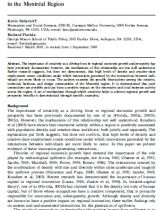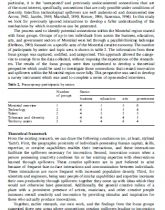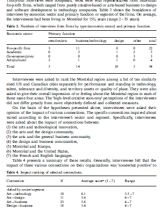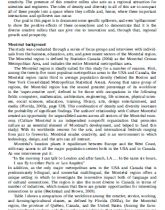Referát: Creativity, connections and innovation: a study of linkages in the Montreal Region
Skrýt detaily | Oblíbený- Kvalita:90,6 %
- Typ:Referát
- Univerzita:Univerzita Tomáše Bati ve Zlíně
- Fakulta:Fakulta managementu a ekonomiky
- Kategorie:Ekonomika
- Podkategorie:Management
- Předmět:Management
- Autor:eliseus
- Rozsah A4:21 strán
- Zobrazeno:1 764 x
- Stažené:0 x
- Velikost:0,2 MB
- Formát a přípona:PDF dokument (.pdf)
- Jazyk:anglický
- ID projektu:2897
- Poslední úprava:27.03.2014
Background
The importance of creativity as a driving force in regional economic growth and
prosperity has been previously documented by one of us (Florida, 2002a; 2002b;
2002c). However, the mechanisms of this relationship not well understood. Knudsen
et al (2003) have shown that innovative activity within a region is positively associated
with population density and creative-class workforce, both jointly and separately. The
explanation put forth suggests, but does not confirm, that high levels of density and
creative-class employment create conditions under which innovations generated by the
interactions between individuals are more likely to occur. In this paper we present
evidence of these innovation-generating interactions.
The importance of creativity as a driving force in regional economic growth and
prosperity has been previously documented by one of us (Florida, 2002a; 2002b;
2002c). However, the mechanisms of this relationship not well understood. Knudsen
et al (2003) have shown that innovative activity within a region is positively associated
with population density and creative-class workforce, both jointly and separately. The
explanation put forth suggests, but does not confirm, that high levels of density and
creative-class employment create conditions under which innovations generated by the
interactions between individuals are more likely to occur. In this paper we present
evidence of these innovation-generating interactions.




